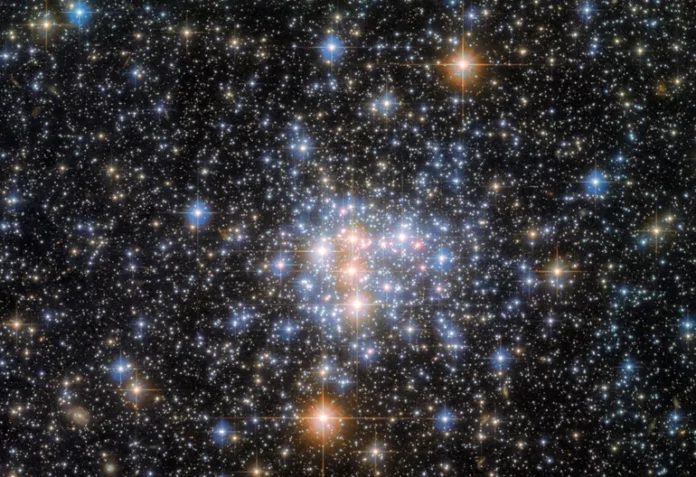Hubble Space Telescope picture reveals a small portion of the Small Magellanic Cloud. Credit: ESA/Hubble & NASA, A. Nota, G. De Marchi
This picture from the NASA/ESA Hubble Space Telescope features a small portion of the Small Magellanic Cloud (SMC). Located only about 200,000 light-years from Earth, the SMC, which is a dwarf galaxy, is one of the Milky Way’s nearest intergalactic neighbors. It makes a pair with the Large Magellanic Cloud (LMC), and both objects can be seen from the southern hemisphere, as well as from some northern latitudes.
Although the Small Magellanic Cloud contains hundreds of millions of stars, this image focuses on just a small fraction of them. These stars comprise the open cluster NGC 376, which has a total mass of only about 3,400 times that of the Sun. Open clusters, as the name suggests, are loosely bound and sparsely populated. This distinguishes open clusters from globular clusters, which are often so thronged with stars that they have a continuous blur of starlight at their centers. In the case of NGC 376, individual stars can be picked out clearly even in the most densely populated parts of this image.
The data in this image come from two different astronomical investigations which relied on two of Hubble’s instruments: the Wide Field Camera 3 (WFC3) and the Advanced Camera for Surveys (ACS). The first investigation used the ACS to explore a handful of star clusters in the Small Magellanic Cloud and help astronomers explore topics including the abundance of low- and high-mass stars in different environments. The second investigation used both the WFC3 and ACS, and aimed to answer fundamental questions about the lives of stars and help astronomers understand precisely where, when, why, and how stars form.





